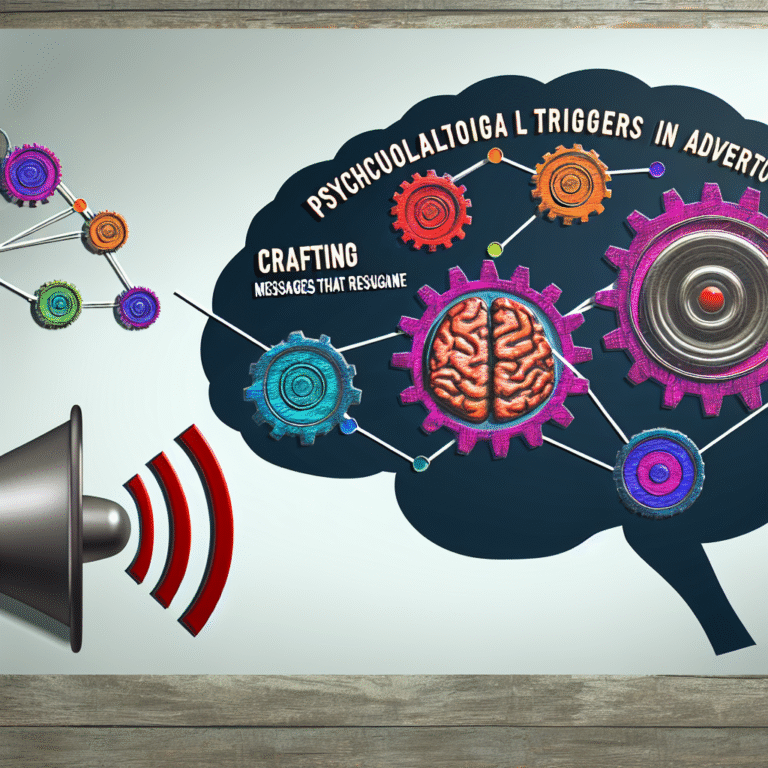Decoding Desire: What Your Sexual Preferences Reveal About Your Mind
Introduction
In a world that often stigmatizes discussions around sexuality, the exploration of our sexual preferences can feel daunting. However, embracing these preferences can lead to profound insights about ourselves. Decoding Desire: What Your Sexual Preferences Reveal About Your Mind is not just an exploration of who we are in the bedroom; it’s a journey into the intricacies of our psychology, our emotions, and our relationships. This article aims to shed light on how understanding your sexual preferences can unlock keys to better mental health, relationship satisfaction, and self-acceptance.
The Significance of Sexual Preferences
Sexuality is a vital aspect of our identity, influencing not only our relationships but also our self-esteem and overall well-being. Acknowledging and exploring our desires opens the door to self-discovery. Certain preferences may reflect hidden aspects of our psyche, desires for intimacy, or even unresolved emotional issues. Thus, Decoding Desire: What Your Sexual Preferences Reveal About Your Mind becomes a vital exploration of personal growth and understanding.
Understanding Sexual Preferences
What Are Sexual Preferences?
Sexual preferences encompass a wide spectrum—from the types of physical intimacy we enjoy to the emotional connections we crave. They can be influenced by biological factors, cultural background, personal experiences, and psychological conditions. Understanding this complexity is the first step in Decoding Desire: What Your Sexual Preferences Reveal About Your Mind.
- Biological Influences: Genetics and hormones can play a significant role in shaping sexual attraction and preferences.
- Cultural Context: Society and culture mold our perceptions of sex and relationships, impacting our preferences.
- Personal Experiences: Past relationships and experiences can inform current desires and preferences.
Case Study: The Impact of Early Experiences
Consider Sarah, a 29-year-old graphic designer who always felt a pull towards BDSM but struggled with shame surrounding her interest. Through therapy, Sarah discovered that her fascination with power dynamics stemmed from her childhood experiences, specifically her authoritarian upbringing. By confronting these feelings and understanding her preferences through the lens of Decoding Desire: What Your Sexual Preferences Reveal About Your Mind, Sarah found empowerment and authenticity in her sexuality.
Analysis: This case illustrates how early experiences can shape sexual interests and how acknowledging these influences can lead to healthier expressions of desire.
The Psychological Underpinnings of Desire
Theories of Sexual Preference
Multiple psychological theories attempt to explain why we are drawn to certain preferences:
- Psychoanalytic Theory: Proposed by Freud, this theory suggests that unresolved childhood conflicts manifest in our adult sexual choices.
- Attachment Theory: Our attachment styles (secure, avoidant, anxious) significantly influence our sexual preferences and choices in partners.
- Cognitive Behavioral Theory: This approach emphasizes how our thoughts and beliefs about sex dictate our preferences and behaviors.
Understanding these theoretical foundations is essential in Decoding Desire: What Your Sexual Preferences Reveal About Your Mind as it allows for a deeper understanding of personal motivations.
Case Study: Understanding Attachment Styles
Let’s explore John, a 34-year-old teacher who identifies as anxious-avoidant. John found it challenging to engage in intimate relationships, often opting for casual encounters instead. Upon realizing that his attachment style stemmed from familial experiences of instability, John began working towards developing healthier emotional connections. This journey allowed him to embrace a broader understanding of love and intimacy, highlighting how attachment styles can illuminate preferences.
Analysis: This case underscores the importance of attachment styles, revealing that understanding one’s emotional framework can lead to healthier sexual expressions.
The Spectrum of Sexual Preferences
Types of Preferences
Sexual preferences can vary widely, from traditional to unconventional practices. Here’s a categorized overview:
Table 1: Spectrum of Sexual Preferences
| Category | Description |
|---|---|
| Heterosexual | Attraction towards the opposite sex. |
| Homosexual | Attraction towards the same sex. |
| Bisexual | Attraction to both sexes. |
| Kinky/Alternative | Preferences including BDSM, swinging, or role play. |
| Asexual | Lacking sexual attraction to others, though they may still desire emotional intimacy. |
Recognizing where one falls on this spectrum aids in Decoding Desire: What Your Sexual Preferences Reveal About Your Mind. Each preference has unique psychological implications and can inform relationships.
Case Study: Embracing the Kinky Side
Take Laura, a 26-year-old who identified as bisexual and had a robust interest in BDSM. Society’s stigma against kink had led her to suppress her desires. After attending a kink community event, Laura realized that her preferences were not only natural but were also a path to understanding her boundaries and desires better. This empowered her to embrace her identity fully and communicate openly with partners.
Analysis: Laura’s journey reveals the importance of community in understanding and accepting sexual preferences, which can often be stigmatized.
Advanced Insights: The Science of Desire
Neurological and Hormonal Influences
Recent studies suggest that neuroscience plays a pivotal role in determining sexual preferences. The brain releases various hormones such as dopamine and oxytocin during sexual activities, influencing attraction and preference.
- Oxytocin: Known as the "love hormone," it can enhance feelings of bonding and intimacy.
- Dopamine: Linked to pleasure and reward, it can shape our sexual motivations and preferences.
By understanding these biological underpinnings, we gain deeper insights into Decoding Desire: What Your Sexual Preferences Reveal About Your Mind.
Case Study: The Dopamine Effect
Consider Mark, a 32-year-old who struggled with promiscuity. Through self-reflection, Mark realized that his need for sexual validation was a form of dopamine-driven behavior, tied to his desire for immediate gratification. By exploring healthier outlets for pleasure, he discovered long-lasting satisfaction in meaningful relationships rather than fleeting encounters.
Analysis: This example illustrates the impact of neurotransmitters on sexual behaviors, emphasizing the need for healthier, more sustainable ways of addressing desires.
Cultural Representations of Desire
Media Influence on Sexual Preferences
Media and pop culture significantly impact our understanding of sexual preferences. From movies and television series to literature, these platforms often shape societal norms and ideals surrounding sexual interests.
- Positive Representations: Celebrating diverse sexual identities can promote acceptance and understanding.
- Negative Stereotypes: Conversely, stigmatizing portrayals can lead to guilt and shame around certain preferences.
Understanding these cultural influences is essential in Decoding Desire: What Your Sexual Preferences Reveal About Your Mind, as they shape personal identities.
Case Study: The Positive Impact of Representation
Take the recent success of inclusive shows like "Sex Education." This series has expanded dialogues on sexual health and preferences, paving the way for discussions about varied identities, including queer sexuality, BDSM, and even asexuality. Many viewers report feeling more comfortable exploring their sexual identities as a result of these narratives.
Analysis: This case showcases the powerful role of media in fostering a more accepting environment for sexual exploration.
Navigating Relationships and Preferences
Communicating Preferences
Effective communication of sexual preferences is critical in any relationship. It fosters intimacy, trust, and understanding among partners.
- Open Dialogue: Encouraging open discussions about desires can lead to richer, more fulfilling relationships.
- Understanding Boundaries: Establishing boundaries ensures mutual respect and a safe space for exploration.
Mastering these skills is an essential component of Decoding Desire: What Your Sexual Preferences Reveal About Your Mind.
Case Study: The Power of Communication
Consider Emma and Jake, a couple who unnecessarily struggled with their sexual relationship due to lack of communication. After a workshop on sexual preferences, they learned to share their desires and boundaries openly. This shift transformed their connection, enriching their intimacy and enhancing understanding.
Analysis: Emma and Jake’s story emphasizes the importance of transparent communication in navigating sexual preferences and building strong relationships.
The Intersection of Desire, Identity, and Self-Acceptance
Embracing Your Preferences
Self-acceptance begins with acknowledging our preferences, which is crucial in Decoding Desire: What Your Sexual Preferences Reveal About Your Mind. Understanding that all preferences are valid can pave the way for healthier relationships with ourselves and others.
- Self-Exploration: Engaging in self-reflection and education about one’s desires can lead to empowerment.
- Rejecting Stigmas: Challenging societal norms and advocating for acceptance of diverse sexual preferences is essential for personal development.
Case Study: The Journey to Self-Acceptance
Let’s examine Alex, a 30-year-old who always identified as straight but later discovered a bisexual orientation. Initially fearful of judgment, Alex spent years internalizing shame. Through self-reflection and connecting with supportive communities, Alex learned to embrace their identity, which played a significant role in cultivating self-love and acceptance.
Analysis: Alex’s experience demonstrates the importance of self-acceptance in understanding and embracing sexual preferences.
Conclusion
Decoding Desire: What Your Sexual Preferences Reveal About Your Mind offers an invaluable opportunity for self-discovery and empowerment. By understanding the complex interplay of biology, psychology, culture, and communication in shaping our desires, we can cultivate healthier relationships with ourselves and our partners. Each preference tells a story, and by embracing these narratives, we open the door to deeper self-acceptance and connection.
Actionable Insights
- Self-Reflection: Take time to explore your feelings and preferences.
- Open Dialogue: Communicate openly with partners about desires and boundaries.
- Seek Community: Engage with groups or platforms that celebrate diverse sexual identities.
- Challenge Norms: Question societal perceptions and advocate for acceptance.
- Prioritize Mental Health: Consider therapy or counseling as a means to navigate complex feelings around sexuality.
FAQs
What are sexual preferences?
Sexual preferences are the types of intimacy and connection that make individuals feel satisfied or attracted to others. They can range from conventional interests to alternative lifestyles.How can understanding my sexual preferences benefit me?
Understanding your sexual preferences can enhance self-awareness, improve relationship satisfaction, and promote healthier communication with partners.Are sexual preferences fixed, or can they change?
Sexual preferences can evolve over time. Factors such as personal experiences, relationships, and self-discovery play significant roles in this fluidity.How can I communicate my sexual preferences to my partner?
Approach the conversation with honesty and openness. Create a safe, judgment-free environment where both partners feel comfortable discussing desires and boundaries.- What if I feel ashamed of my sexual preferences?
Remember that all preferences are valid. Seeking therapy or support groups can provide a safe space to explore these feelings and work towards self-acceptance.
In embracing Decoding Desire: What Your Sexual Preferences Reveal About Your Mind, we invite you to explore the wonderful depths of your individuality. The journey of self-discovery is ongoing, and every preference is a step towards greater understanding and joy.











